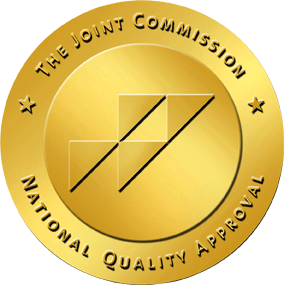Vyvanse Addiction: Symptoms, Withdrawal, Treatment
Attention deficit hyperactivity disorder (ADHD) is a disorder that produces symptoms like inattentiveness and impulsivity. People with ADHD may experience performance issues at school or work. Prescription medications like Vyvanse can be life-changing for persons diagnosed with ADHD. These medications can improve a patient’s ability to focus and reduce instances of impulsivity. Unfortunately, these benefits can lead to Vyvanse addiction. Misusing lisdexamfetamine dimesylate can have long-term negative consequences, including addiction.
What Is Vyvanse?
Many people are familiar with common ADHD drugs like Ritalin and Adderall. While Ritalin and Adderall have been available since the late 1950s to early 1960s, Vyvanse is a much newer medication. Approved in 2007, Vyvanse is an amphetamine used to treat ADHD in adults and children over the age of six. This medication stimulates the central nervous system to produce dopamine and norepinephrine.
Vyvanse is also available in generic form under the name lisdexamfetamine dimesylate. It is available as an extended-release capsule or chewable tablet. When you take Vyvanse, the drug is inactive. For the medication to become active, your stomach must digest the inactive ingredients to reach the active ingredients. This process takes approximately one to two hours, so it may take a few hours to feel the effects of Vyvanse. Since Vyvanse is an extended-release medication, patients only need to take it once a day.
How Is Vyvanse Different Than Adderall and Ritalin?
Unlike Vyvanse, Ritalin is available in both instant-release and extended-release forms. Its active ingredient is methylphenidate, a norepinephrine–dopamine reuptake inhibitor. While Vyvanse stimulates the production of dopamine and norepinephrine, Ritalin stops the body from reabsorbing them. While Vyvanse is approved for both ADHD and binge eating disorder, Ritalin is not approved for the treatment of binge eating disorder. The FDA approved Ritalin for the treatment of ADHD and narcolepsy.
Another common ADHD drug, Adderall, also stimulates the central nervous system. Unlike Vyvanse, Adderall is a mix of amphetamine and dextroamphetamine. While Vyvanse typically takes several hours to work and lasts longer, Adderall lasts for up to four hours. The extended-release form of Adderall lasts between eight and 12 hours.
Like Vyvanse, both Adderall and Ritalin have the potential for addiction and physical dependence.
How Does Vyvanse Addiction Happen?
Vyvanse is a Schedule II drug, which means that there is the potential to become dependent on the drug. For some people, addiction may begin with a legitimate prescription for Vyvanse. A recent study showed that students with ADHD may be more likely to misuse their prescription stimulants. If an individual takes more Vyvanse than directed or takes the medication more frequently, they may become addicted to the medication.
Patients with a prescription for Vyvanse are not the only people at risk for developing an addiction. Like other substance use disorders, Vyvanse addiction can begin when someone takes the drug at a party or other social situation to feel euphoric or high. like Vyvanse is widespread among college students, who take the drug because they believe it will help them focus on schoolwork. Over time, they may need more Vyvanse to achieve the same effect.
What Happens When You Take Vyvanse?
Those who use Vyvanse recreationally may experience increased focus and concentration, which is typically one of the reasons that it may be abused. However, recreational Vyvanse users without ADHD are at a greater risk for adverse side effects, including:
- Increased heart rate
- Elevated blood pressure
- Dry mouth
- Stomach pain
- Nausea or vomiting
- Loss of appetite
- Increased alertness
- Rapid speech
In addition, someone who misuses Vyvanse can develop a dependence on the drug. They may need to take more lisdexamfetamine dimesylate to get the same effects.
Signs and Symptoms of Vyvanse Addiction
An addiction to Vyvanse is called a stimulant use disorder. Below are a few of the warning signs that someone is addicted to Vyvanse:
- Intense urges to take Vyvanse
- Needing more Vyvanse to experience a high
- Desire to use the drug frequently
- Inability to reduce or quit using the drug
- Mixing Vyvanse with alcohol consumption and other substances
- Neglecting family, work, or school because of Vyvanse use
- Engaging in risky behaviors
It is possible to overdose on Vyvanse. Warning signs of an overdose include severe agitation, seizures, and hallucinations.

Vyvanse Withdrawal Symptoms
As you withdraw from Vyvanse, you may feel your emotions and energy levels crash. You may feel agitated, depressed, and sleepy. Here are some of the other withdrawal symptoms commonly seen with Vyvanse:
- Irritability
- Anxiety
- Depression and mood swings
- Difficulty focusing
- Headaches
- Insomnia
- Shakiness
These symptoms can last for several weeks if you have been taking Vyvanse for quite a while. If you’d like to stop taking Vyvanse and you experience withdrawal symptoms when you try to stop, talk to an addiction specialist first. They can help you taper off or detox from the medication, which can significantly reduce withdrawal symptoms.
How to Treat Vyvanse Addiction
If you are dealing with addiction to Vyvanse, it’s important to be aware of the many treatment options available. Residential treatment programs provide a safe, structured environment for the individual to recover from Vyvanse addiction. Inpatient treatment programs are more intense than residential treatment programs. Inpatient treatment may occur under a doctor’s supervision in a hospital or medical setting.
An intensive outpatient therapy program (IOP) requires a significant time commitment. Participants can expect to spend at least two to three hours per day in therapy at least three days per week. Similar to an IOP, a partial hospitalization program (PHP) requires a large time commitment. Participants in these programs typically commit to at least five hours of therapy daily, five days a week.
Outpatient treatment programs offer participants more flexibility. These programs may include weekly support groups or individual counseling sessions. Patients may have check-ins with a case manager.
All of these programs offer multiple modalities of therapy, including:
- Cognitive behavioral therapy (CBT)
- Dialectical behavior therapy (DBT)
- Eye movement desensitization and reprocessing therapy (EMDR)
- Family therapy
- Holistic therapy, such as art therapy or yoga
No matter which treatment option you choose, you can expect the staff to create an addiction treatment program tailored to your specific needs and medical history.
If you or a loved one could benefit from an addiction treatment program, contact us today to learn how to get started.


Medically Reviewed by Kelsey Jones, MS, LPC



